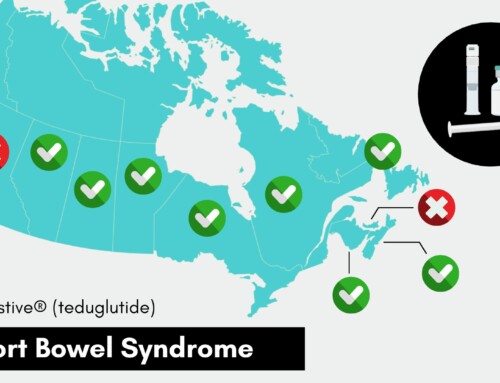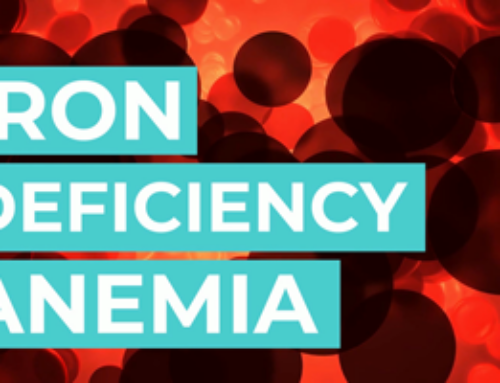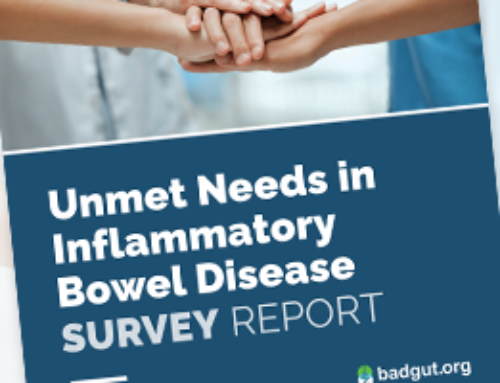
Video: What can I eat if I have IBS?
Video Transcript
For a lot of people who receive a diagnosis of irritable bowel syndrome, or IBS, the first thing they want to know is “What can I eat?” From simple changes to specialized diet plans, everyone has an opinion.
Maybe you have a friend who said avoiding dairy and wheat eliminated all her symptoms, or a colleague who swears that a vegan diet cured his IBS. Maybe you’ve joined an online group where everyone is saying you must eat a low FODMAP diet. The truth is, each person has a unique experience with IBS, so, what works for one person might not work for another. There is no one diet guaranteed to treat IBS, but some have more success than others, and there are guidelines that can help you figure out what will work best for you.
IBS is a functional gastrointestinal condition defined by abdominal pain, bloating, constipation, and/or diarrhea. If you want to learn more about IBS, find links to our other IBS videos in the description. Most people with IBS find that they can’t just eat whatever they would like to eat, because certain foods can worsen their symptoms.
If you decide to make changes to your diet, start by thinking about how and when you eat. Do you sit down for a meal and take your time, or do you grab bites of food while focusing on other activities? Bad eating habits can be especially detrimental if you have IBS.
Some good habits include sitting down at the table for each meal, keeping portions moderate or small, eating at regular intervals, chewing well, and eating slowly. Eating large meals sporadically can increase digestive symptoms, as can eating while stressed, anxious, angry, or distracted.
How you prepare your food matters too. If you find that eating a salad gives you intense abdominal pain and bloating, try steaming some vegetables until they are soft instead. Cooked food is often easier to digest.
While fat is a vital nutrient, large amounts of it can upset the digestive tract. Focus on eating fat from food sources such as fish, nuts, and avocado. Try lower-fat cooking methods, such as baking, roasting, steaming, boiling, and sautéing, and limit deep frying or adding too much oil when cooking your food.
Protein is important for gut health and overall health. When choosing a protein option, some are easier to digest, such as eggs, chicken, tofu, and lactose-free Greek yogurt, rather than beans, lentils, or steak.
Another key ingredient for a healthy gut is dietary fibre. However, fibre can be a tricky subject for people with IBS. On one hand, fibre can help regulate digestive health, feed good bacteria in the gut, and, depending on the type of fibre, can reduce constipation or diarrhea. On the other hand, fibre can irritate a sensitive gut and lead to pain and bloating, especially in large doses. Don’t go from a low-fibre diet to one high in fibre over night, as this can cause very painful digestive symptoms.
If you want to increase the fibre in your diet, you need to make gradual changes, increasing your daily intake by a few grams and maintaining the new level for a week or two before adding more, and increase your fluid intake.
Even if you aren’t eating lots of fibre, you should still make sure you are drinking enough water. This is a good tip for everyone, as hydration is super important for overall health. It can be especially crucial for those with IBS.
Frequent diarrhea can lead to dehydration, so it is important to drink plenty of fluids whenever you experience this symptom. Water can also help if you have constipation, because liquids help soften stools. And, while water is ideal, you can also stay hydrated by drinking herbal tea, broth, juice, milk, and most non-alcoholic liquids.
Another option that could improve your gut health is probiotics. Fermented foods such as yogurt, kombucha, kimchi, and kefir are easy to access options, but you don’t really know what you are getting with these products. While it won’t hurt to try incorporating these foods in your diet, it is best to take probiotic supplements that have research backing their efficacy. However, there are many products available, a lack of regulation in the industry, and no guarantee that these will help. Since they can also be quite expensive, a one-month trial can help you figure out if this approach is helpful for you. Speak with your healthcare team about which product is best for your needs.
Now that we’ve gone over ways you can improve your diet, we need to focus on the most difficult changes to make: eliminating problem foods. Not every person with IBS has the same trigger foods, but some are more common than others. For many, the first step is to check for any major intolerances or allergies.
Lactose intolerance is very common overall, and the symptoms can be more pronounced in individuals with IBS. Gluten intolerance is another possibility, but it isn’t as common as you might think. Some individuals who think they are gluten intolerant actually have trouble digesting certain carbohydrates in bread, not gluten, which is a protein. If dairy and bread don’t give you problems, you don’t need to avoid them.
Cruciferous vegetables, such as broccoli, cauliflower, cabbage, and Brussels sprouts, as well as legumes such as chickpeas, lentils, and beans, contain high amounts of fermentable carbohydrates, which can cause gas and bloating that can be especially pronounced in those with IBS, so it is best to limit these.
Fruits contain sugars that can irritate the gut, so don’t have more than one portion per meal or snack and wait a few hours before having more. Sugar alcohols such as sorbitol, mannitol, xylitol, and erythritol, which can be found in some sweetened foods, can also lead to severe bloating and diarrhea.
You might have noticed that most of the foods that can cause trouble for those with IBS are types of carbohydrates. This is where the low FODMAP diet comes in. FODMAP stands for fermentable oligosaccharides, disaccharides, monosaccharides, and polyols. These are carbohydrates that don’t digest well in the small intestine and instead pass into the large intestine where they ferment and cause symptoms.
A short-term low FODMAP diet might help you identify trigger foods. We’ve written a lot about the low FODMAP diet at badgut.org, and you can find links in the description. It typically involves three stages. First, you remove all high FODMAP foods from your diet. Then, you slowly reintroduce the foods, noting which cause problems for you. The final step is creating a personalized diet based on this information.
Other foods and drinks to potentially limit include alcohol, beverages that contain caffeine, carbonated beverages, spicy foods, and deep fried or heavily processed fatty foods.
Sometimes, the easiest way to figure out what food intolerances you have is to try an elimination diet, with the help of a dietitian. This involves temporarily avoiding certain foods and seeing if that improves your symptoms. This can be a lot to sort out. You might want to try using our three-month digestive health journal to record your food journey. Click the link in the description to buy a copy.
Food is so important. What and how we eat can make such a difference in our physical and mental health and impact our social and professional lives, as so many events revolve around food.
If you plan on making drastic changes to your diet, speak with a registered dietitian who can help you find an eating plan that improves your symptoms without sacrificing your ability to maintain a healthy diet and enjoy eating.






